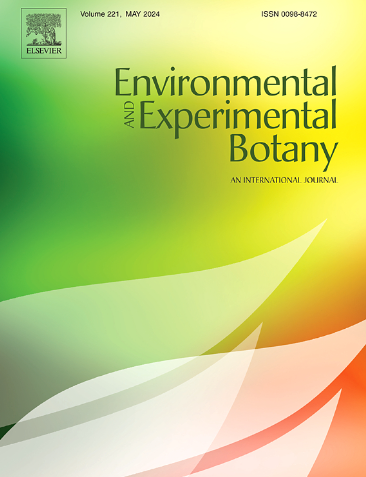High boron in irrigation water mitigates drought stress effects on 'Carrizo' citrange seedlings
IF 4.7
2区 生物学
Q2 ENVIRONMENTAL SCIENCES
引用次数: 0
Abstract
Cultivating citrus in semi-arid areas exposes them to drought periods and sometimes irrigation with non-conventional water sources (e.g. reclaimed water and desalinated seawater) containing high boron (B) concentration. This study aims to determine how high B influences plant water relations and water transport in well-watered (WW) and drought-stressed (DS) ‘Carrizo’ citrange [Citrus sinensis (L.) Osb. × Poncirus trifoliata L.] seedlings during a stress period and after rewatering. Seedlings were well-watered with control B (0.11 mg·L−1) or high B concentration (5 mg·L−1) for 29 days. Then irrigation was withheld from half the plants for 7 days (drought-stressed, DS), followed by a 10-day re-irrigation period using control B. High B irrigation increased endogenous B accumulation, without reaching toxic levels as chlorophyll fluorescence parameters remained unaltered and plant water status was unaffected. However, partial stomatal closure mediated by a 1.8-fold increase in foliar ABA accumulation decreased transpiration and photosynthesis. Under drought stress, plants irrigated with high B concentration better maintained their leaf water status, with leaf water potential decreasing by only 0.9 MPa compared to 1.8 MPa decrease in Control B-DS plants relative to their respective well-watered plants. Thus, high B enhanced drought tolerance through ABA-mediated stomatal regulation, allowing more conservative water use during drought. Plant water status of high B plants recovered faster and more completely than control B plants, which experienced greater drought-induced damage.
高硼灌溉水减轻了‘Carrizo’柑橘幼苗的干旱胁迫效应
在半干旱地区种植柑橘会使它们面临干旱期,有时还会使用含有高硼(B)浓度的非常规水源(如再生水和脱盐海水)进行灌溉。本研究旨在确定高B对水分充足(WW)和干旱胁迫(DS)‘Carrizo’柑橘(Citrus sinensis (L.))植株水分关系和水分运输的影响。的Osb。× 三叶松[Poncirus trifoliata L.]幼苗在胁迫期和复水后。用对照B(0.11 mg·L−1)或高浓度B(5 mg·L−1)充分浇水29 d。然后,一半的植株停止灌溉7天(干旱胁迫,DS),然后使用对照B进行10天的再灌溉期。高B灌溉增加了内源B的积累,但没有达到毒性水平,因为叶绿素荧光参数保持不变,植物水分状况不受影响。然而,叶片ABA积累增加1.8倍介导的部分气孔关闭降低了蒸腾和光合作用。在干旱胁迫下,高浓度灌水的植株叶片水分状态保持得更好,叶片水势仅下降0.9 MPa,而对照B- ds植株叶片水势相对于水分充足的植株下降1.8 MPa。因此,高B通过aba介导的气孔调节增强了抗旱性,使干旱期间的水分利用更加保守。高B植株植株水分状况恢复速度快、恢复完全,而对照植株遭受的旱情损害更大。
本文章由计算机程序翻译,如有差异,请以英文原文为准。
求助全文
约1分钟内获得全文
求助全文
来源期刊

Environmental and Experimental Botany
环境科学-环境科学
CiteScore
9.30
自引率
5.30%
发文量
342
审稿时长
26 days
期刊介绍:
Environmental and Experimental Botany (EEB) publishes research papers on the physical, chemical, biological, molecular mechanisms and processes involved in the responses of plants to their environment.
In addition to research papers, the journal includes review articles. Submission is in agreement with the Editors-in-Chief.
The Journal also publishes special issues which are built by invited guest editors and are related to the main themes of EEB.
The areas covered by the Journal include:
(1) Responses of plants to heavy metals and pollutants
(2) Plant/water interactions (salinity, drought, flooding)
(3) Responses of plants to radiations ranging from UV-B to infrared
(4) Plant/atmosphere relations (ozone, CO2 , temperature)
(5) Global change impacts on plant ecophysiology
(6) Biotic interactions involving environmental factors.
 求助内容:
求助内容: 应助结果提醒方式:
应助结果提醒方式:


